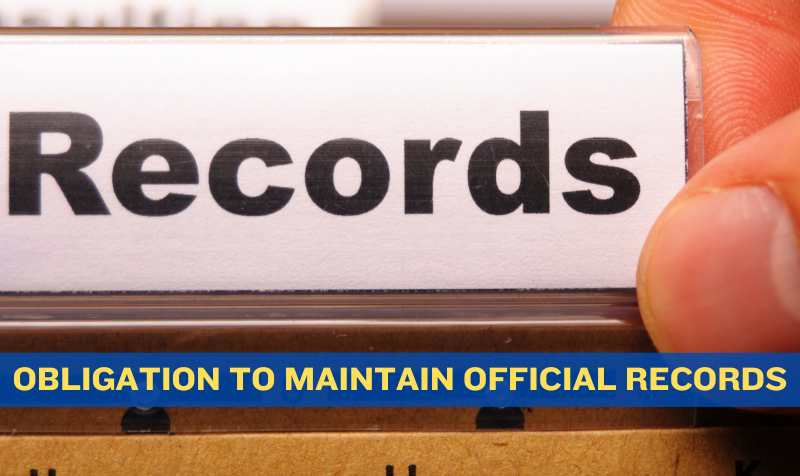
What is the standard of care that a community association officer and board member owe to their association? The Homeowners’ Association Act (Ch. 720 Fla. Stat.) provides in §720.303, “The officers and directors of an association are subject to §617.0830 and have a fiduciary relationship to the members who are served by the association.” The Condominium Act (Ch. 718 Fla. Stat.) in §718.111 similarly provides, “The officers and directors of the association have a fiduciary relationship to the owners.” Still, though, there is no express definition of the term “fiduciary relationship” set out in either piece of legislation.
With that in mind, let’s take a look at some of the more common definitions of the term “fiduciary,” including the following:
- A fiduciary relationship is a relation between two parties wherein one party (fiduciary) has the duty to act in the best interest of the other party (beneficiary or principal).
- A fiduciary is a person who holds a legal or ethical relationship of trust with one or more other parties. Typically, a fiduciary prudently takes care of money or other assets for another person.
- A fiduciary duty is a relationship in which one party places special trust, confidence, and reliance in and is influenced by another who has a fiduciary duty to act for the benefit of the party.
- Most importantly, and germane to this discussion, a fiduciary is a person or organization that acts on behalf of another person or persons, putting their clients’ interests ahead of their own, with a duty to preserve good faith and trust.
From all of this we can glean that a good community association board member puts the interest of their association well above their own personal interests. Not only are homeowners’ associations subject to Chapter 720, Florida Statutes, and condominium associations subject to Chapter 718, Florida Statutes, but both are subject to Florida’s Not-For-Profit Corporation Act, Chapter 617, Florida Statutes. Section 617.0830, Fla. Stat., provides a mechanism that will shield a director from breach of fiduciary duty claims so long as they follow the requirements set forth in this ever-important piece of legislation.
Section 617.0830, Fla. Stat., provides,
A director shall discharge his or her duties as a director, including his or her duties as a member of a committee, In good faith;
With the care an ordinarily prudent person in a like position would exercise under similar circumstances; and
In a manner he or she reasonably believes to be in the best interests of the corporation.
In discharging his or her duties, a director may rely on information, opinions, or reports, including financial statements and other financial data, if prepared or presented by the following:
One or more officers or employees of the corporation whom the director reasonably believes to be reliable and competent in the matters presented;
Legal counsel, public accountants, or other persons as to matters the director reasonably believes are within the persons’ professional or expert competence; or
A committee of the board of directors of which he or she is not a member if the director reasonably believes the committee merits confidence.
A director is not acting in good faith if he or she has knowledge concerning the matter in question that makes reliance otherwise permitted by i, ii, and iii immediately above unwarranted. (In plain English and for example, this means if you have reason to know that you should not rely on such professional advice because say the expert was impaired, then relying on his or her advice will not provide the statutory protection.)
A director is not liable for any action taken as a director, or any failure to take any action, if he or she performed the duties of his or her office in compliance with all of the aforementioned.
Therefore, for example, should the association’s legal counsel or other selected expert in a particular field provide advice to the association’s board and then the board member decides to act in a contrary manner, then such board member would not have the aforesaid statutory protection and, in fact, could be accused of acting in bad faith should they act in a manner contrary to the advice or instruction of the expert.
Condominium association directors should be aware that pursuant to §781.112, Fla. Stat., a willful and knowing failure to complete the structural integrity reserve study and/ or the milestone inspection when required to do so is considered to be an automatic breach of such officer’s and director’s fiduciary relationship to the unit owners. Yikes!
Additionally, the “business judgment rule” protects board members from their decision making so long as the board member acted in such a manner as would any other reasonably prudent person under similar circumstances. Generally, the decisions of directors are not subject to successful attack unless there is a showing of fraud, criminal activity, self-dealing, dishonesty, or incompetency. In fact, in the often-cited seminal case Sonny Boy, L.L.C. v. Asnani, 879 So. 2d 25, 28 (Fla. 5th DCA 2004), the court held that the directors of a condominium association were not personally liable for failing to maintain and repair common elements where the accusation was that rental revenue was lost as a result thereof because there was no showing of fraud, self-dealing, or unjust enrichment.
The Sonny Boy court went even further when it wrote in its opinion that “it is well established in Florida that absent fraud, self-dealing and betrayal of trust, directors of condominium associations are not personally liable for the decisions they make in their capacity as directors of condominium associations.” See, e.g., Perlow v. Goldberg, 700 So.2d 148 (Fla. 3d DCA 1997) (finding directors of condominium associations not individually liable for actions and governance of condominium association); Taylor v. Wellington Station Condominium Association, Inc., 633 So.2d 43 (Fla. 5th DCA 1994) (finding that in general, corporate directors and officers cannot be personally liable for corporate acts absent actual wrongdoing in the form of fraud, self-dealing, or unjust enrichment to trigger individual liability); Munder v. Circle One Condominium, Inc., 596 So.2d 144 (Fla. 4th DCA 1992) (reversing lower court’s finding of individual liability by condominium developer). Similarly, §617.0834(1), Florida Statutes (2002), and §607.0831(1), Florida Statutes (2002),[2] provide insulation for condominium association directors from liability in their individual capacities absent fraud, criminal activity, self-dealing, or unjust enrichment. Perlow, 700 So.2d at 149.”
In Grand Harbour Community Association, Inc. v. G.H. Vero Beach Development, LLC., Case No. 4D2023-1191, (Fla. 4th DCA Oct. 2, 2024), the trial court had found that the developer and the developer-appointed directors were entitled to summary judgment on the breach of fiduciary duty claim because no evidence existed that the developer-appointed directors had acted in bad faith in failing to fund the reserves or in undercharging the developer for its deficit funding obligation, and therefore there was no basis to hold the developer vicariously liable for the acts of its appointed directors. Then, on appeal, the 4th District Court of Appeal affirmed the trial court ruling because “the community association declaration provided that the board members shall not be liable for any mistake of judgment, negligent or otherwise, except for their own individual willful misfeasance, malfeasance, misconduct, or bad faith.””
The appealate court continued, “Under Florida law, the ‘business judgment rule’ protects directors of non-profit corporations, from personal liability for any actions undertaken as directors ‘absent a showing of bad faith, self-dealing, or a violation of criminal law,’” citing New Horizons Condo. Master Ass’n. v. Harding, 336 So. 3d 796, 799 (Fla. 3d DCA 2022).
In yet another case, Miller v. Homeland Prop. Owners Association, Inc., 284 So. 3d 534, 537 (Fla. 4th DCA 2019), the court held that deference to community associations’ decisions must be given when i) the association had the contractual or statutory authority to perform the relevant acts; and ii) the board acted reasonably and not in an arbitrary, capricious manner or in bad faith.
So, while Florida Statutes and relevant case law provide a strong level of protection in favor of officer and board member decision making, such decisions should be rendered reasonably, in reliance on expert opinions (when relevant), and not decided in bad faith or in an arbitrary and capricious manner or in a manner that suggests self-dealing or unjust enrichment, etc. in favor of the officer and director(s).









